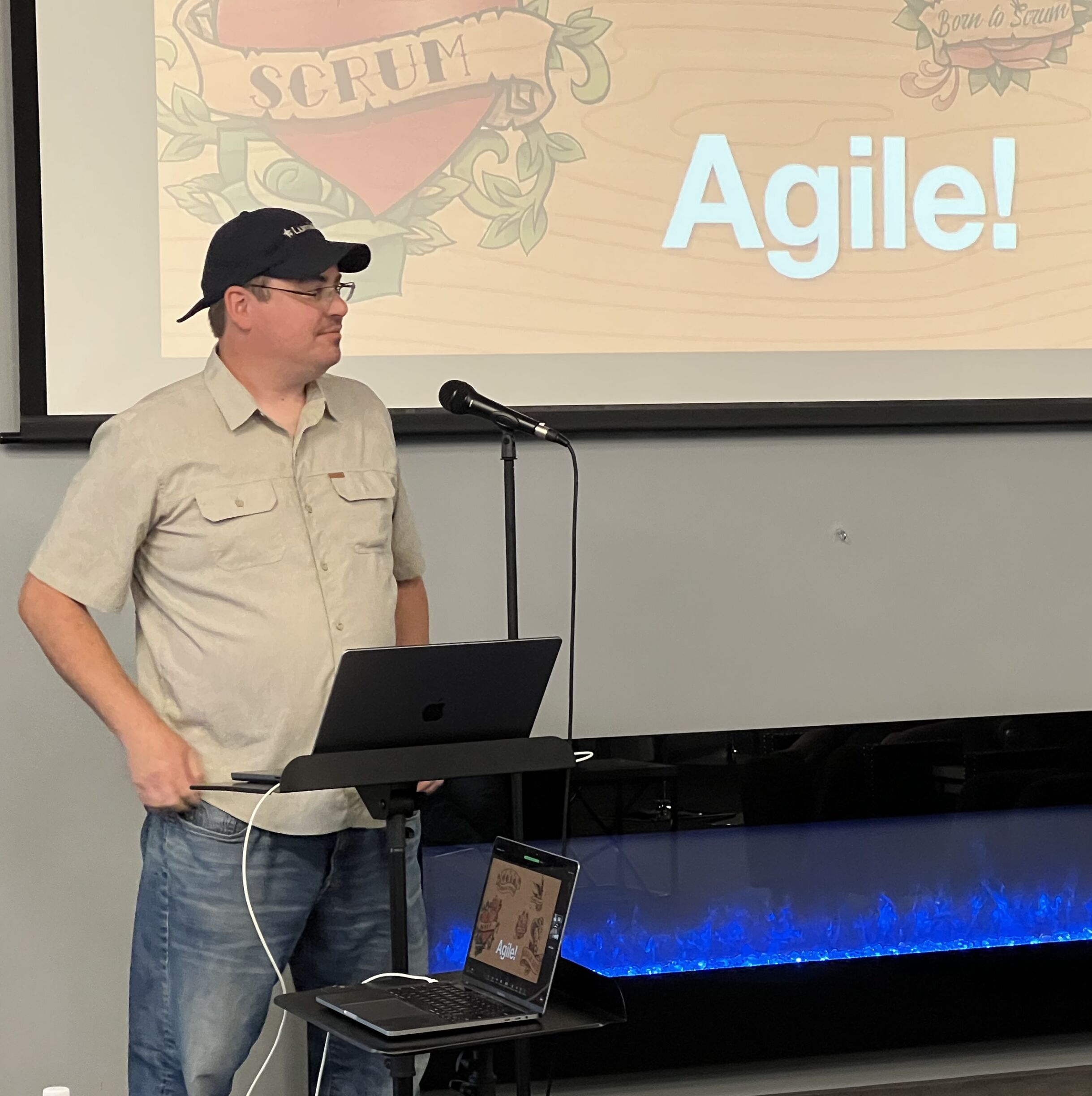
LuminFire’s CTO, Nick Ciske had a recent consultation with a client whose FileMaker developer had left the company. When you schedule a consultation with our CTO, he’ll work closely with you to understand your challenges and develop innovative solutions that perfectly align with your objectives. We’ve adjusted some of the following content for privacy’s sake, but here’s the gist:
Client: Now that our internal IT person has left, we’re not sure what to do with our FileMaker solution. Should we try to fix the existing one, start over from scratch, or switch to a different system altogether?
CTO: It sounds like your previous IT person built a great solution for you, but they were working on their own and eventually reached the limits of their expertise. The good news is that here at LuminFire, we have a team of experts with a wide range of experience, not just with FileMaker, but also with web development and other technologies. Our first step would be to ensure your current system is stable and running smoothly. Then we can focus on making improvements and automating more of your processes.
Client: Would it make sense to just hire a new developer to handle this?
CTO: Based on what you’ve told me, you don’t necessarily need a full-time developer on staff. Perhaps an IT generalist would be sufficient. The danger of hiring a “one tool” developer is that they try to solve every problem with that tool. Once we get the system running smoothly, it will require mostly routine maintenance.
Client: What other tools are you suggesting?
CTO: The key is to use the right tools for the right jobs. FileMaker is a powerful tool, but it shouldn’t be the only one in your toolbox. It’s a fantastic tool for managing your data, but it can’t do everything. When FileMaker isn’t the best fit, we bring in other tools, such as BrilliantFlows, our webhook service. This enables asynchronous data exchange, meaning other systems can send information to BrilliantFlows, which then delivers it to FileMaker when it’s ready.
We can also easily integrate different systems using other tools like BrilliantConnect, allowing them to seamlessly communicate and share data with FileMaker. This creates stronger, more reliable integrations. We also offer BrilliantPortal, which makes your FileMaker data accessible online without requiring a separate FileMaker license for each user. This allows you to scale your user base significantly without increasing costs.
We always strive for the most efficient solutions. We often aim to achieve 80% of the desired outcome with only 20% of the effort. By making small, incremental improvements over time, we can automate manual tasks like spreadsheet imports, reducing the need for additional staff and allowing your current employees to focus on more valuable work. This ultimately saves you time and money.
Our ultimate goal is to help your business grow and thrive. By investing in a well-designed and efficient system, you’ll see increased profits and savings.. And as your business grows, you’ll likely find yourself wanting to expand your system further – a true win-win situation.
By letting us build robust systems and automations, you can free up your time to focus on your core business
Client: Can you give me an example of how this works in practice?
CTO: We recently helped a client who struggled to find an off-the-shelf ERP system that met their needs. They wanted a customized solution built around FileMaker.
Since they needed to connect to multiple e-commerce platforms like Shopify and Amazon, we developed an ERP system using BrilliantHub. This system includes a customer portal built with BrilliantPortal that collects orders from various sources and displays them to the client.
The portal handles much of the order processing, making things easier for the client. It then seamlessly sends the order information to FileMaker, where it’s processed and shipped. FileMaker acts as the internal system of record, while the portal provides a trusted source of information for customers and handles all the integrations.
This approach makes it easy to scale data collection as the client’s business grows. Because the portal is built with PHP (using the Laravel framework), we can leverage existing libraries and code, which saves us time and effort. FileMaker then retrieves the orders from the portal, regardless of where they originated.
The first level of thinking is integration of your existing systems and the cloud. The second level is to think strategically and build a system that can handle a wide range of inputs, transform them, and deliver the desired outcomes. This type of forward-thinking approach is what sets LuminFire apart. Many internal developers may not have the same level of expertise in areas like message queues and microservices. By using a loosely coupled infrastructure, we gain greater flexibility to adapt and change systems over time.
A robust, well-built system will be more cost-effective in the long run than a cheaper system that constantly requires repairs. Working with LuminFire also reduces the risk associated with relying on a single internal developer. Our team has the knowledge and expertise to maintain and support your system, even if someone leaves or becomes unavailable. We also take a holistic approach, assessing your entire system to identify potential risks, such as security vulnerabilities and inadequate backups.
Client: We had another IT consultant suggest that we completely abandon FileMaker. What’s your take on that?
CTO: It’s not uncommon to encounter IT professionals who are unfamiliar with FileMaker and recommend against its use due to ignorance.
However, FileMaker is a powerful and proven platform. Claris, the company behind FileMaker, has recently undergone a significant transformation, embracing an agile development methodology and a more engineering-focused approach. They’ve made significant strides in improving the platform, making it more flexible and adaptable than ever before.
FileMaker has a long and successful history, spanning over 40 years. As a wholly-owned subsidiary of Apple, it benefits from the support and resources of a major global company. This should give you confidence in the long-term viability of the platform.
A commonly suggested alternative is Salesforce–however adopting a platform like Salesforce can be much more expensive and will limit your flexibility to customize and adapt your solution in the long run. In addition, once you stop paying for Salesforce, you will only leave with your data – all the investments made disappear once your license expires.
Many businesses rely on FileMaker, often without even realizing it. In fact, many Fortune 500 companies utilize FileMaker within their organizations.
Client: Is it a problem if I’m using Windows?
CTO: Not at all. Platform compatibility isn’t as big of a deal these days. For example, IBM has embraced Macs for its employees, recognizing the benefits of giving people choices and saving money.
Cloud-based solutions have really changed things. The operating system of the server or the computer you’re using isn’t as critical anymore. What matters most is ensuring that different systems can easily talk to each other and share information.
In many ways, the web browser has become the new ‘operating system’ for most applications.
FileMaker Pro can be deployed on both Windows and macOS. It also offers an iOS client, and WebDirect as deployment options, and we can build web portals and apps for Android and Linux devices.
Ideally, your solutions should be platform-agnostic, meaning they can function seamlessly across different devices and operating systems.
Client: So, does it make sense to stick with FileMaker?
CTO: You’ve already invested significantly in your existing FileMaker solution. It’s often more beneficial to renovate and reconfigure your current system rather than starting from scratch. This allows you to leverage the time, effort and money already invested in the solution.
Starting over can often lead to setbacks. You may end up rebuilding features that were already functional, resulting in wasted time and effort. While a complete overhaul may be necessary in some cases, we believe that iterative improvements are generally the most effective and economical approach. This allows you to gradually enhance your system while maintaining its functionality.
There’s a lot we can do to improve your existing FileMaker system. It’s like having a car that’s in good condition overall but needs a new engine. Sometimes, replacing the engine is the most practical solution. However, if you continue to make repairs and upgrades to an older car, you might eventually wish you’d purchased a new one. But if there’s no suitable new car available that meets your needs, you have to make the best of your current vehicle.
Client: What’s the next step?
CTO: The most important factors to consider are your budget and how you define value. Our process is to begin with a discovery phase to understand your priorities and identify the areas that require the most attention. We’ll work with you to create a list of pain points and assess the potential risks. Then, we’ll evaluate the potential return on investment for each potential improvement.
If a particular solution seems too expensive, we’ll explore alternatives. There’s often a way to achieve 80% of the desired outcome with a more budget-friendly approach. During discovery we can discuss your needs in more detail and explore the various options available.
Client: Thank you so much. This has been very helpful. I’m excited to see where this goes.

Summary
In this call the client sought advice on how to proceed with their FileMaker solution after their internal IT person left. LuminFire’s CTO suggested a multi-pronged approach:
- Maintain the Existing Solution: Keep the current system running smoothly and make necessary enhancements.
- Leverage Additional Tools: Utilize tools like BrilliantConnect, BrilliantPortal, and BrilliantFlows to automate processes, integrate with other systems, and improve scalability.
- Consider a Hybrid Approach: Combine FileMaker with other technologies like Laravel PHP and WordPress for a more flexible and robust solution.
- Prioritize and Iterate: Focus on high-impact improvements and make gradual changes over time.
Nick emphasized that FileMaker is a powerful tool but likely should not be the sole solution. By using a combination of tools and a strategic approach, a business can optimize their processes and achieve better results.
If you’re looking for a technology partner that can make your business more effective, productive, and profitable, LuminFire can help. Set up a free consultation.


